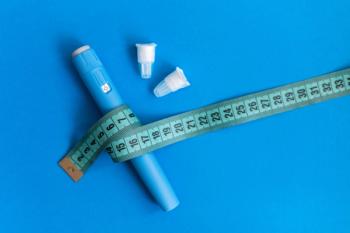
Givosiran Use Linked to Improvement in Porphyria Attacks
Use of the RNA inhibitor givosiran was shown to reduce expression of delta-aminolevulinic acid synthase 1, in turn reducing the severity of acute attacks and chronic symptoms for patients with severe hepatic porphyria.
Use of the
By interfering with ALAS1 expression, givosiran prevents the buildup of delta-aminolevulinic acid (ALA) and porphobilinogen (PBG), the accumulation of which “is central to the pathogenesis of acute attacks and chronic symptoms in acute hepatic porphyria,” the authors noted.
The phase 3, multicenter, double-blind, placebo-controlled
For the patients with AIP in the treatment group, they had just 3.2 (95% CI, 2.3-4.6) attacks compared with 12.5 (95% CI, 9.4-16.8) for patients in the placebo group—a 74% difference (P < .001). Additionally, the givosiran cohort had a 90% lower median (interquartile range [IQR]) annualized attack rate vs the placebo cohort: 1.0 (IQR, 0.0-6.2) vs 10.7 (IQR, 2.2-26.1), respectively.
“This decrease was evident within the first month and was sustained throughout the intervention period,” the authors noted. In fact, half of the givosiran cohort had no attacks in the 6-month treatment period vs 17% of the placebo group.
The givosiran cohort also had 86% and 91% lower levels of urinary ALA (at 3 and 6 months) and PBG (at 6 months), respectively, vs the placebo group (P < .001); less hemin use, at 6.8 vs 29.7 days (a 77% difference; P < .001); and better pain scores (P = .046 by post hoc Wilcoxon signed-rank test). Fifty-four percent of the givosiran group did not use hemin at all vs 23% of the placebo group.
An additional exploratory end point of opioid use showed that 67% of the givosiran group used opioids at any point in the trial vs 88% of the placebo group.
However, along with disease improvement came increased rates of hepatic and renal adverse events (AEs), which occurred in 90% of the treatment group and 80% of the placebo group.
The most common AEs among those receiving givosiran were elevated alanine aminotransferase, decreased estimated glomerular filtration rate, injection-site reactions, nausea,
Patients were enrolled in the study between November 16, 2017, and June 27, 2018. Their mean (SD) age was 38.8 (11.4) years, 89% were female, the median (IQR) attack rate was 8 (4-16), and the most common comorbidities were elevated aminotransferase (37%), iron overload (33%), liver disease (28%), hypertension (27%), and renal impairment (25%).
“We found that patients with acute intermittent porphyria who received givosiran for 6 months had a significantly lower annualized rate of porphyria attacks and better results regarding multiple other disease manifestations than those who received placebo,” the authors concluded. “The use of givosiran was associated with an acceptable safety profile, although patients had a higher frequency of hepatic and renal adverse events.”
The short study duration and lack of data on subtypes of acute hepatic porphyria beyond AIP may limit the applicability of these results, according to the authors, who continue to investigate the long-term efficacy and safety of givosiran in an open-label extension of ENVISION.
Reference
Balwani M, Sardh E, Ventura P, et al. Phase 3 trial of RNAi therapeutic givosiran for acute intermittent porphyria. N Engl J Med. 2020;382(24):2289-2301. doi:10.1056/NEJMoa1913147
Newsletter
Stay ahead of policy, cost, and value—subscribe to AJMC for expert insights at the intersection of clinical care and health economics.













































